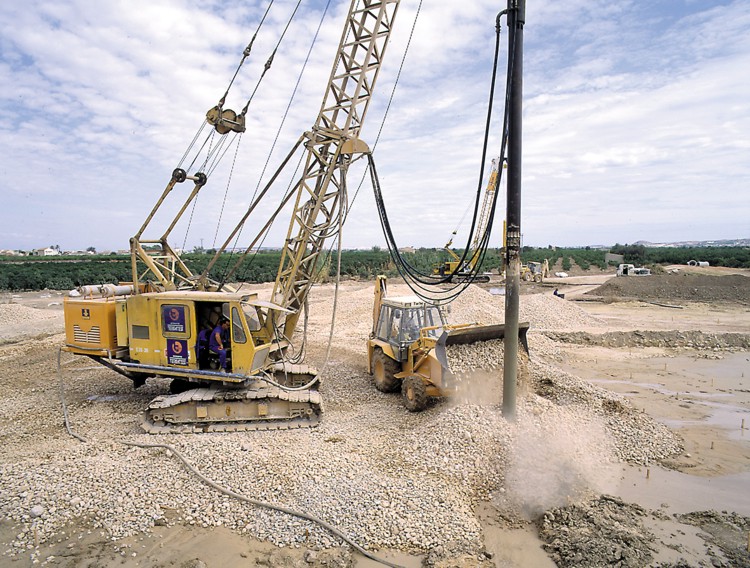Stone Columns
Stone Columns
TERRATESTConcept and characteristics
As a general rule, stone columns are executed with a vibrator with lower discharge and a discharge chamber and an extension feed tube on the top. Thanks to the feed tube and the compressed air, the gravel is pushed to the end. For this special equipment, Terratest has created a guide frame that enables driving and lifts the vibrator, the gravel then falling into the outlet hole. The vibrator then drops back down into the gravel, compacts it and expands sideways against the soil. The columns produced in this way bring together the essential loads to be withstood.
Geotechnical aspects
Unlike vibro-compactation, an improvement in compactness between columns is not initially considered, although it does arise in some cases. The improvement lies in the extremely elastic flexible module inclusions, without cohesion, which have an improved supporting capacity to decrease and control settlements.
Procedure
1. Preparation
The machine is positioned over the drive point and stabilised on the skids. A loader supplies the gravel.
2. Filling
The contents of the hopper are poured into the tube. On closing it, the compressed air allows for a continuous flow of gravel to the outlet hole.
3. Driving
The vibrator descends, moving the soil sideways, to the planned depth thanks to the compressed air and the static drive of the unit.
4. Compactation
When the final depth is reached, the vibrator is lifted slightly and the gravel takes up the freed space. The vibrator is then lowered again to expand the gravel sideways against the soil and compact it.
5. Finish
The column is produced in this manner on successive drives up to the planned level. The foundation footings are then executed directly in the traditional manner.

